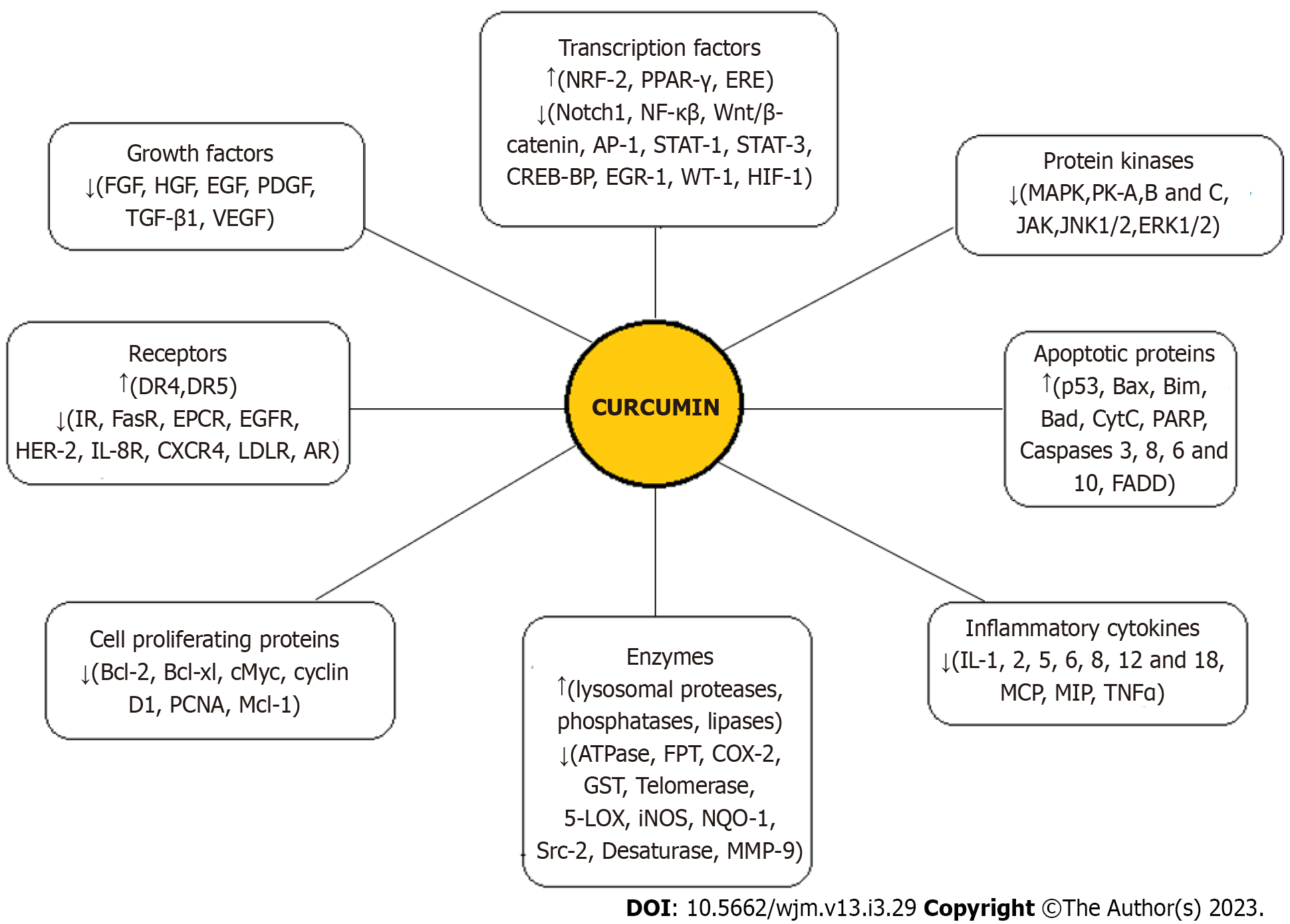Copyright
©The Author(s) 2023.
World J Methodol. Jun 20, 2023; 13(3): 29-45
Published online Jun 20, 2023. doi: 10.5662/wjm.v13.i3.29
Published online Jun 20, 2023. doi: 10.5662/wjm.v13.i3.29
Figure 2 Effects of curcumin on multiple molecular targets involved in carcinogenesis.
↑: Upregulated; ↓: Down regulated. AP-1: Activator protein 1; AR: Androgen receptor; CREB BP: CREB Binding protein; CXCR: Chemokine receptor; DR4, DR5: Death receptor 4, 5; EGF: Epithelial growth factor; EGFR: Epithelial growth factor; EPCR: Endothelial cell protein C receptor; ERE: Estrogen response element; FADD: FAS-associated death domain; Fas R: Fas receptor; FGF: Fibroblast growth factor; FPT: Farnesyl protein transferase; GST: Glutathione S transferase; HGF: Hepatocyte growth factor; HIF 1: Hypoxia inducible factor 1; iNOS: Inducible Nitric oxide synthase; IR: Insulin receptor; JNK: Jun N-terminal kinase; LDLR: Low density lipoprotein receptor; MAPK: Mitogen activated protein kinase; MCP: Monocyte chemo-attractant protein; MIP: Macrophage inflammatory protein; MMP: Matrix metalloproteinase; NQO-1: NAD(P)H dehydrogenase (quinone) 1; NRF 2: Nuclear factor erythroid 2-related factor 2; PARP: Poly ADP- Ribose polymerase; PCNA: Proliferating cell nuclear antigen; PDGF: Platelet derived growth factor; PK: Protein kinase; PPAR γ: Peroxisome proliferator-associated receptor γ; STAT: Signal transducer and activator of transcription; TGF β 1: Transforming growth factor β 1; TNF-α: Tumor necrosis factor α; VEGF: Vascular endothelial growth factor.
- Citation: Mukherjee D, Krishnan A. Therapeutic potential of curcumin and its nanoformulations for treating oral cancer. World J Methodol 2023; 13(3): 29-45
- URL: https://www.wjgnet.com/2222-0682/full/v13/i3/29.htm
- DOI: https://dx.doi.org/10.5662/wjm.v13.i3.29









